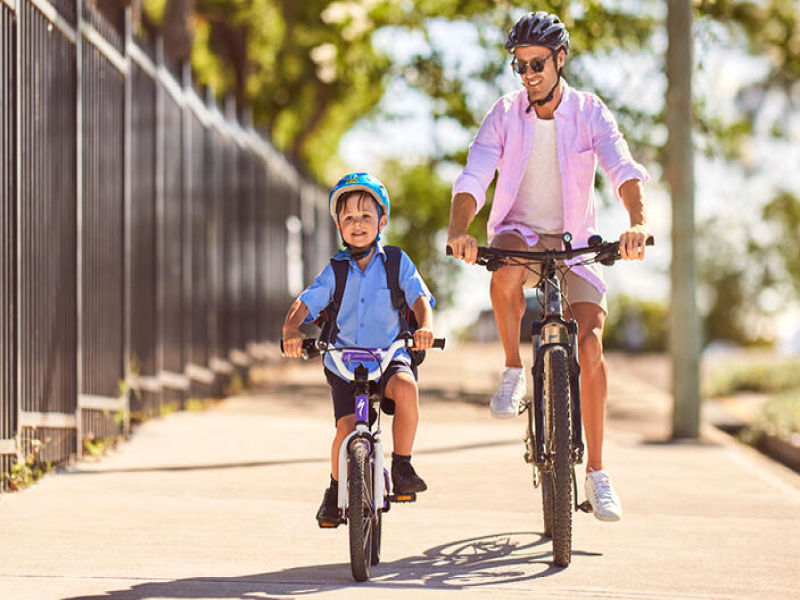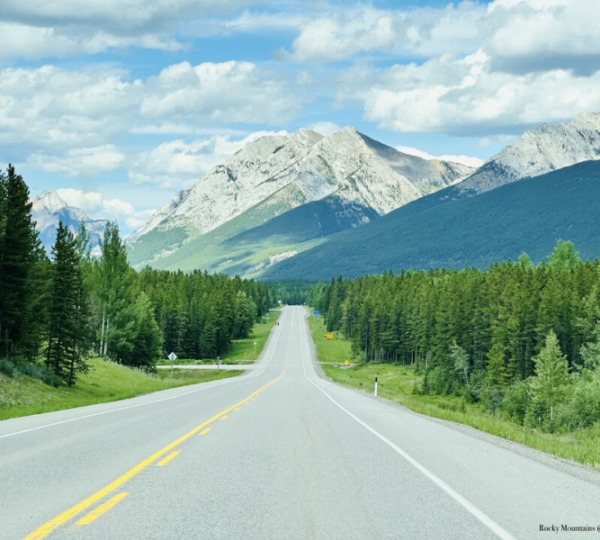Introduction – Embracing Slow Transportation
As we see the world slowly transforming into a society that is all about quick and speedy solutions in terms of transportation, Slow travel or slow movement is slowly picking up momentum among those who are environmentally conscious as well as health conscious travelers. Slow transportation also comprise of taking the scenic means of transport, that is, the act of traversing a distance not being as important as taking the best transportation to take. It includes different means of transportation, mainly trains, bicycles, and walking, all of which provide specific value toward a greener existence. – Embracing Slow Transportation

What is Slow Transportation?
Slow transport hence means, a way or means of transport that focuses more on environmental conservation, individual and communal welfare, rather than speed and efficiency. It inclines clients to use transport that has decrease impact on carbon foot print, make physical activity and help develop an appreciation for the environment. Especially as tourists are looking for different values-powered travel experiences, adopting slow transportation also follows the general turn to sustainable tourism and mindful living.
Advantages of Adopting Slow Transportation
Thus, it means that the advantages of using slow modes of transport stem from something beyond an ability of an individual to decrease their carbon footprint. Below are some key advantages:
- Environmental Impact: Kaluuzo means slow transportation hence it reduces emission of greenhouse gases. Transports contribute over a quarter, approximately 25% of the total greenhouse gases emissions in the EU as estimated by the European Environment Agency. In the light of this, one realizes that exercising ones right to travel through trains, bikes and by walking can greatly help in reducing this figure.
- Mental and Physical Health: Biking and walking are good for one’s health in many ways for example the following benefits. As stated by the CDC, exercising in any form can help in boosting mental health and the aging process, decrease anxiety and increase overall health. Slow transport respects people’s need to move more in their day to day tasks.
- Enhanced Travel Experience: It also provides a closer attachment to a place, people and things hence enabling slow travelers to move at a pace that lets them interact with what they see. Cycling through country roads and enjoying views or travel to observe the traditions and culture in a train are much more engaging than a fast car.
Within the course of this paper, we will also dissect the slow transportation system in as much as we can learn about its environmental, social, and personal health implication. The following section will look at the details of train travel, biking and walking and then offer real life tips on how you can incorporate these forms of transport in you daily lifestyle.
The Case for Slow Transportation
Amid global warming and traffic jams in cities, the urgency of emergency sustainable mobility solutions is essential than ever. The use of slow transportation has many benefits that support ecological and social relations, and also benefit individuals’ health.
Environmental Benefits
One of the most significant advantages of slow transportation is its positive impact on the environment. Traditional modes of transport, such as cars and planes, are major contributors to greenhouse gas emissions and air pollution. In contrast, trains, bikes, and walking present eco-friendly alternatives.
- Reduction in Carbon Footprint:
- Trains: According to the International Energy Agency (IEA), rail transport emits only about 0.041 kilograms of CO2 per passenger-kilometer, significantly lower than road or air travel. Trains utilize energy more efficiently and can carry a higher number of passengers, leading to a smaller per-person carbon footprint.
- Biking: Cycling produces no emissions, making it one of the greenest forms of transportation available. A study published in the Journal of Transport Geography indicated that cycling can reduce CO2 emissions by up to 70% compared to driving.
- Walking: Similar to biking, walking is a zero-emission mode of transport. Encouraging more walking can lead to cleaner air and less reliance on fossil fuels.
- Reduced Congestion and Pollution:
- Embracing slow transportation methods helps alleviate traffic congestion, particularly in urban areas. A 2020 report by the Texas A&M Transportation Institute found that traffic congestion in major U.S. cities could be reduced by up to 20% with increased use of public transportation and biking.
- Moreover, by reducing the number of cars on the road, air quality improves, benefiting public health and the environment.
Social and Economic Benefits
In addition to environmental advantages, slow transportation fosters social connections and can stimulate local economies.
- Strengthening Local Economies:
- Utilizing trains and bikes supports local businesses. Train stations often serve as hubs for commerce, promoting nearby shops and restaurants. According to the National Association of Railroad Passengers, every $1 invested in rail services can generate up to $4 in economic return for local communities.
- Biking can also encourage spending at local cafes, shops, and attractions along cycling routes, providing economic benefits to neighborhoods that embrace cycling infrastructure.
- Fostering Community Interactions:
- Slow transportation encourages interactions among travelers and locals. Walking through neighborhoods allows for spontaneous conversations and engagements that are often missed when traveling in a car or on a train.
- Community programs, such as group bike rides or walking tours, can strengthen neighborhood bonds, leading to improved social cohesion and a sense of belonging.
Personal Health and Well-Being
Embracing slow transportation can greatly enhance personal health and mental well-being.
- Physical Benefits of Biking and Walking:
- Regular physical activity is crucial for maintaining a healthy lifestyle. According to the World Health Organization (WHO), adults should aim for at least 150 minutes of moderate-intensity aerobic activity each week. Cycling and walking are excellent ways to achieve this goal while commuting or traveling.
- Biking strengthens muscles, improves cardiovascular health, and can even aid in weight management. Walking offers similar benefits, promoting joint health and increasing overall fitness levels.
- Mental Health Advantages:
- Slow transportation can contribute to mental well-being. Studies have shown that physical activities like biking and walking can lead to reductions in stress, anxiety, and depression.
- Engaging with nature, which is often part of walking or biking routes, has been shown to have a calming effect, enhancing mood and promoting mindfulness.
Consequently, those who consciously decide on slow mobility opportunities, including trains, bikes, or walking, do not only work for the benefit of Planet Earth’s health but also receive personal dividends in form of improved physical well-being and strengthening of interlinkage within the chosen societies.
Embracing Train Travel
One of the most efficient and enjoyable slow transports is a Train. The given camouflages have special characteristics that do not only bring additional comfort to the trip but also affect the acquisition of the trip’s essence.
The Advantages of Train Travel
- Comfort and Scenic Views:
- Train journeys often provide spacious seating compared to airplanes or buses. Passengers can walk around, stretch, and enjoy amenities such as dining cars or lounges. According to a survey by the Railway Industry Association, 82% of travelers prefer trains for their comfort over other modes of transport.
- Scenic routes, like the famous Glacier Express in Switzerland, offer breathtaking views of landscapes that are often inaccessible by car. These picturesque journeys allow travelers to appreciate the beauty of their surroundings, transforming travel into a memorable experience.
- Accessibility and Convenience:
- Trains are often more accessible than airports, with stations typically located in city centers, making them easier to reach. Unlike flying, train travel requires less time for security and boarding, providing a more relaxed experience. For example, Amtrak reports that the average passenger arrives just 30 minutes before departure, compared to the recommended 2 hours for flights.
- Many countries have extensive rail networks, providing convenient connections for both short and long-distance travel. For instance, Europe boasts an integrated train system that makes it easy to travel across borders, often quicker than driving or flying.
Tips for Using Train Services
- How to Find the Best Routes and Schedules:
- Utilize online resources like train service websites and mobile apps to compare routes, schedules, and prices. Websites such as Rome2rio and Trainline aggregate information across different rail operators, making it easier to find the best options for your journey.
- Booking tickets in advance often secures better prices and ensures you have a reserved seat, especially during peak travel seasons.
- What to Pack for a Comfortable Journey:
- Pack light but bring essentials such as a reusable water bottle, snacks, and entertainment (like books or downloaded shows). Consider packing a travel pillow and blanket for added comfort, especially on longer journeys.
- Make sure to carry a power bank for your devices, as some trains offer limited charging options.
Notable Train Journeys Around the World
Train travel is not only about the destination; the journey itself can be an adventure. Here are some iconic train journeys that exemplify the beauty of slow travel:
- Trans-Siberian Railway:
- Stretching over 9,000 kilometers across Russia, this legendary train journey offers a unique glimpse into diverse landscapes, from the Ural Mountains to Lake Baikal. Travelers can experience various cultures, cuisines, and scenery over several days, making it a once-in-a-lifetime adventure.
- Glacier Express:
- Known as the “slowest express train in the world,” the Glacier Express runs between Zermatt and St. Moritz in Switzerland. The journey takes approximately 8 hours, featuring panoramic views of the Swiss Alps, lush valleys, and charming villages.
- The Canadian:
- This train journey travels from Toronto to Vancouver, covering over 4,500 kilometers of stunning landscapes, including the Rocky Mountains and beautiful prairies. While in the observation car, passengers will be in a position to enjoy several luxurious services alongside beautiful sights.
If people decide to travel by train they are given an opportunity to make a positive change to the environment while at the same time successfully enhancing their travel experiences through comfort and stunning views that some trains offer.
The Benefits of Biking
Why Choose Biking?
- Cost-Effectiveness Compared to Car Ownership:
- Owning and maintaining a car can be expensive. The American Automobile Association (AAA) estimates that the average cost of owning a car exceeds $9,500 annually when factoring in expenses like fuel, insurance, maintenance, and parking. In contrast, biking incurs minimal costs—primarily maintenance and occasional repairs.
- Cycling can also reduce commuting costs. A study by the League of American Bicyclists found that regular commuters who bike save an average of $5,000 per year compared to those who drive.
- Environmental Benefits:
- Biking has a negligible carbon footprint, as it produces no emissions during operation. The Environmental Protection Agency (EPA) reports that the average passenger vehicle emits about 4.6 metric tons of CO2 annually. By opting to bike instead, individuals contribute to cleaner air and reduced traffic congestion.
- Cycling also alleviates traffic congestion, particularly in urban areas. The Texas A&M Transportation Institute notes that increasing cycling infrastructure can significantly decrease vehicle traffic, leading to improved air quality and less noise pollution.
Choosing the Right Bike
Selecting the right bike for your needs is crucial to enjoying the experience of biking as a mode of slow transportation. Here are some key factors to consider:
- Types of Bikes for Different Needs:
- Commuter Bikes: Ideal for daily commuting, these bikes are designed for comfort and efficiency, often featuring racks for carrying items. Look for bikes with fenders to protect against splashes in wet conditions.
- Touring Bikes: Built for longer journeys, touring bikes offer stability and comfort, accommodating additional gear for extended trips. They typically feature a robust frame and multiple gears to handle varying terrain.
- Mountain Bikes: If your routes include off-road trails, mountain bikes are built for rugged terrain. They feature wider tires and sturdy frames to withstand challenging conditions.
- Maintenance Tips:
- Regular maintenance ensures a safe and enjoyable riding experience. Basic upkeep includes checking tire pressure, lubricating the chain, and inspecting brakes and gears.
- Invest in a good-quality lock to prevent theft and consider taking a basic repair kit on longer rides, including tools for fixing flats and adjusting brakes.
Planning Your Bike Routes
Choosing safe and enjoyable cycling paths enhances your biking experience. Here are some tips for effective route planning:
- Best Practices for Selecting Safe and Enjoyable Cycling Paths:
- Utilize online maps and resources specifically designed for cyclists, such as Google Maps’ biking directions or cycling-specific apps like Komoot. These platforms often highlight bike lanes, bike shops, and points of interest along your route.
- Consider routes with lower traffic volumes and dedicated bike lanes to ensure safety. Cycling groups in the local community usually offer mapping that suggest safe cycling areas, as well as organized group cycling that would ensure safety is observed whilst offering an opportunity to make new friends.
- Apps and Resources for Navigating Bike-Friendly Routes:
- Strava: This app not only can record all of the rides but also can also has a segment competition aspect and can help find the most popular routes used by cyclists of a certain city.
- Ride with GPS: Anyone seriously into planning their bike routes would benefit from this app which includes maps, elevation information and the capability of sharing those routes with friends.
- AllTrails: Originally focusing on hiking trails, AllTrails also features biking paths and allows cyclist to explore beautiful areas of different states.
Incorporation of biking to a daily transport has additional benefits apart from improving the health, economic budget of a person and the general environment of the society.

Walking: The Ultimate Slow Transportation
The Joys of Walking
- Exploring Your Surroundings at a Leisurely Pace:
- Walking enables travelers to engage with their surroundings in a way that other forms of transportation simply cannot. It allows for spontaneous detours, opportunities to interact with locals, and the chance to discover hidden gems that may go unnoticed when traveling by car or train. A study published in the Journal of Environmental Psychology found that people who walked through urban environments reported feeling more connected to their surroundings compared to those who traveled by vehicle.
- Walking also allows for a more immersive experience. Whether you’re wandering through a historic city, strolling along a beach, or hiking in nature, each step brings a new perspective and fosters a deeper appreciation for the world around you.
- Connection with Nature and the Environment:
- Many urban areas are designed to be walkable, featuring parks, waterfronts, and pedestrian-friendly streets. Engaging with these spaces can enhance one’s mental well-being and promote a sense of community. Research by the National Institutes of Health (NIH) indicates that spending time in nature can reduce symptoms of anxiety and depression, making walking not just a form of transportation but also a restorative practice.
Health Benefits of Walking
- How Regular Walking Can Improve Physical Health:
- Walking is a low-impact exercise that can be easily integrated into daily routines. The American Heart Association recommends at least 150 minutes of moderate-intensity aerobic activity per week, which can be achieved through regular walking. Benefits include improved cardiovascular health, increased endurance, and weight management.
- According to a study published in The Lancet, individuals who engage in regular walking can reduce their risk of chronic diseases, including heart disease, diabetes, and certain cancers.
- Mental Health Benefits: Enhancing Creativity and Reducing Anxiety:
- Walking has been linked to enhanced cognitive function and creativity. A study conducted by researchers at Stanford University found that individuals who walked experienced a 60% increase in creative output compared to those who were seated.
- Additionally, walking provides an opportunity for mindfulness, allowing individuals to clear their minds and focus on the present moment. This practice can reduce stress levels and promote a sense of calm and clarity.
Integrating Walking into Daily Life
- Strategies for Incorporating More Walking into Your Routine:
- Walking Meetings: Consider holding meetings while walking, which not only fosters creativity but also encourages physical activity. A study by the University of Utah found that walking meetings led to increased engagement and productivity among participants.
- Errands on Foot: Try walking or biking for short errands instead of driving. This not only reduces emissions but also provides a chance to enjoy the fresh air and get some exercise.
- Communities and Programs Promoting Walking Initiatives:
- Many cities have begun implementing programs that promote walking as a viable transportation option. Initiatives such as “Walking School Buses” encourage children to walk to school safely in groups, fostering a culture of walking from an early age.
- Local organizations often host walking events, such as charity walks or guided neighborhood tours, creating a sense of community and encouraging residents to explore their areas on foot.
This means steering people towards walking more for transport with attendant health, social and lifestyle benefits as a result.

Conclusion
While being surrounded by efficiency algorithms all around, opting for slow and aware travel focusing on trains, bicycles, and feet as the primary means of transportation provides an engaging and healthy way to expand our experiences and to heal both our bodies and the world around us. By giving priority to these means of transport we find ourselves connected more with nature, enjoy the process of travel and become a part of sustainable living.
Review of the significance of slow mobility as a concept
- Environmental Impact: Selecting slow transportation lowers carbon impacts and enhances air quality greatly. Trains and bikes aiding in the fight against climate change while trains and bikes are low emission practices, walking is a type of practice that is emission-free that anyone can practice.
- Social and Economic Benefits: Such, slow transportation enhances the bonding among the community members and boost up local businesses. What might mean choosing trains, bicycles and walking – an opportunity to support local populations and pay more attention to what we are surrounded with.
- Health and Well-Being: The impact of slow transportation for the health of both – the body and the mind – cannot be overestimated. Biking and walking increase fitness, decrease stress, and leisurely train travel helps people relax.
Gentle reminder to ‘Rethink travel: Use Trains, Bikes, and Walking for transportation’.
Now, the next time you’re planning your next trip or your way to work, think about slow transport. Hopping on a train to go watch the valleys, biking in a park, going for a walk to the café nearby, all these small decisions lead toward a more sustainable and healthier lifestyle.
Slower transport is not only about how we get from A to B but essentially, it’s about what we want from transport; the role; the impacts. If we put experiences before velocity, we can be more healthy, human and humane and design this world for ourselves and generations to come.
References
- National Institutes of Health (NIH). “The Benefits of Walking for Mental Health.”
- A comprehensive resource discussing the mental health benefits of walking and its impact on overall well-being.
- International Energy Agency (IEA). “The Role of Rail in Reducing CO2 Emissions.”
- This report highlights the environmental benefits of train travel and its efficiency in reducing greenhouse gas emissions.
- League of American Bicyclists. “Cycling and Sustainable Transportation.”
- An article that outlines the economic and environmental advantages of biking as a mode of transportation.
- Texas A&M Transportation Institute. “2020 Urban Mobility Report.”
- A detailed analysis of urban mobility trends, emphasizing the benefits of integrating cycling and public transport to reduce congestion and emissions.
- American Heart Association. “Walking: The Health Benefits.”
- Information on how walking contributes to physical health and the recommended activity levels for maintaining a healthy lifestyle.
- Stanford University. “Walking Improves Creative Thinking.”
- Research findings on the positive effects of walking on creativity and problem-solving abilities.
- Journal of Environmental Psychology. “The Impact of Walking on Connection to Place.”
- A study exploring how walking influences people’s connection to their environment and community.
These references provide valuable insights into the benefits and practicalities of embracing slow transportation through trains, biking, and walking. If you need any more information or specific studies, just let me know!




